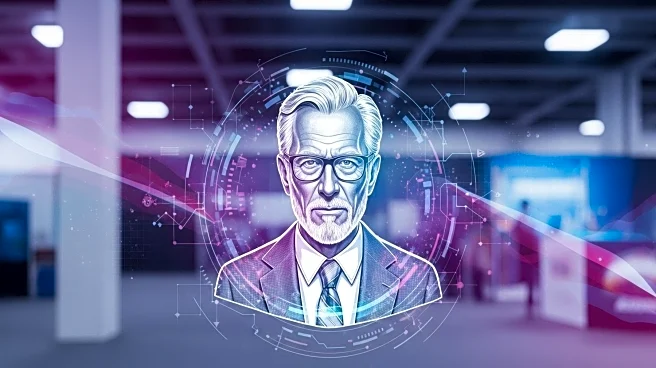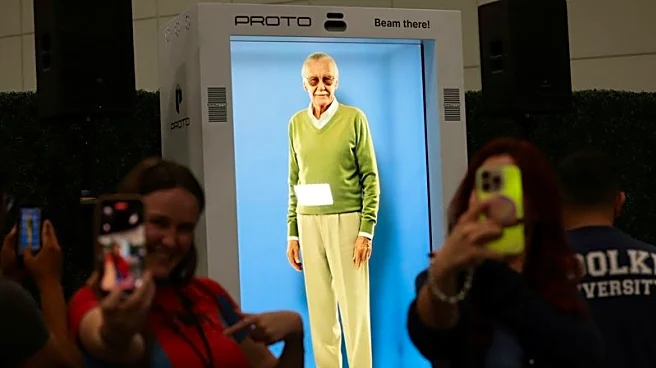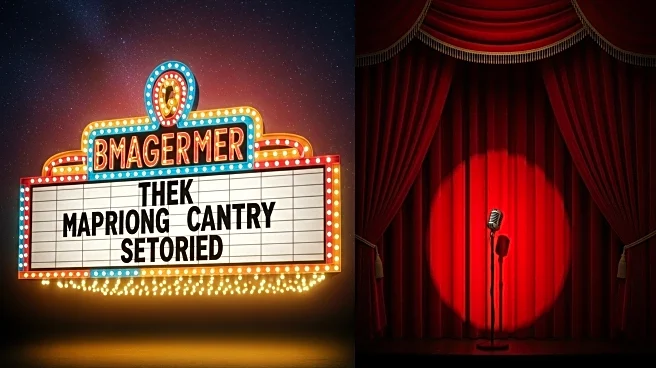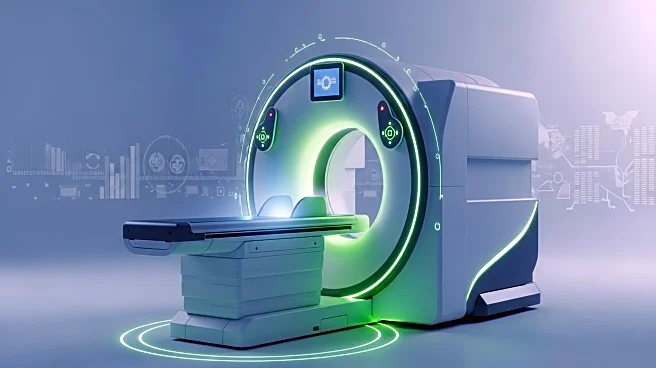What's Happening?
The Los Angeles Comic Con has unveiled an AI-powered avatar of the late Stan Lee, allowing fans to interact with the comic book legend in a new way. This avatar, part of the Stan Lee Experience, is designed to answer questions using decades of Lee's words, interviews, and writings. The technology, developed by Proto Inc. and Hyperreal, is not a traditional hologram but an interactive image that processes and responds to questions. The project, which took months of planning, aims to maintain and expand Stan Lee's legacy by providing an entry point into the world of storytelling he created.
Why It's Important?
This development represents a significant advancement in the use of AI for digital resurrections of deceased celebrities, potentially transforming how fans engage with their favorite figures. The technology could have broader applications beyond entertainment, such as in education and healthcare, where Proto's HIPAA-compliant devices could facilitate remote consultations. The introduction of AI avatars like Stan Lee's could also influence the entertainment industry by offering new ways to preserve and celebrate cultural icons, potentially leading to ethical discussions about the use of AI in representing deceased individuals.
What's Next?
As the technology evolves, it is likely that more digital avatars of celebrities will be created, expanding the scope of interactive experiences available to fans. This could lead to increased interest from other industries in adopting similar technologies for various applications. Stakeholders in the entertainment and technology sectors may explore partnerships to develop new content and experiences, while ethical considerations regarding the representation of deceased individuals will need to be addressed.
Beyond the Headlines
The use of AI to create digital avatars raises questions about the ethical implications of representing deceased individuals. There is a need to consider the wishes of the individuals and their families, as well as the potential impact on their legacy. Additionally, the technology could lead to a shift in how cultural icons are remembered and celebrated, potentially influencing future generations' understanding of these figures.











